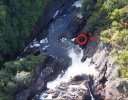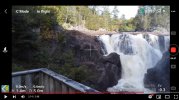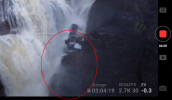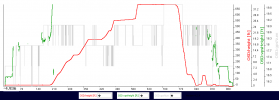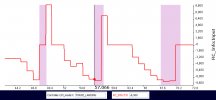First,
We see an elevation value on our remote control indicating feet above takeoff point.
We need to understand how a drone knows it elevation above ground.
Simply put it is barometric pressure
What is barometric pressure?
To simplify the discussion the following is important to know.
- The measurement of atmospheric air pressure is done with a device called a barometer
- Sea level pressure is expressed in millibars.
- Standard sea level pressure is 1013.2 millibars, 29.92 inches of mercury, 760 millimeters of mercury, or about 14.7 pounds per square inch.
- Pressure increases about 1 inch per 1,000 feet
- For a drone this equates to 10 feet for every 0.01 change in atmospheric pressure change.
EXAMPLE:
When I turn on my drone the electronics records and SETS atmospheric pressure in memory. This establishes my 0 foot elevation height.
As the drone increases in elevation the atmospheric air pressure changes and a calculation is performed against the set point to report the elevation in feet above ground (take off point).
This works great and as long as the atmospheric pressure that I am flying in does not change. The elevation reported and calculated is accurate.
What happens if the weather is changing which it is always doing? If after locking in the atmospheric pressure for 0 feet the drone flies and the actual ground air pressure changes by .01 inches (100th of an inch).
The drone will be flying with an elevation error of 10 feet.
So if flying over water you may think you are at 15 feet but in reality you may be at 5 feet above water assuming a change in pressure of only 100th of an inch in air pressure change.
Now let’s talk about temperature.
As temperature changes during the day the rate of heating causes air movement as air near the ground is warmed it rises. This rise in temp and movement of air may also contribute to the change in atmospheric pressure as air movement is what causes atmospheric pressure to change.
Now let us talk about drones and downward ultrasonic flight sensors.
When a drone finds itself above a solid surface the sensors provide a reflection in signal and a trigger to land and then a calculation is performed to control rate of landing.
Over land this is a simple safe landing.
Over water ultrasonic waves from these sensors PASS through water and are not reflected. (This assumes a flat water surface below the sensors.)
If the water has movement then some reflection may occur. This fluctuation may or may not be recognized by the sensor.
